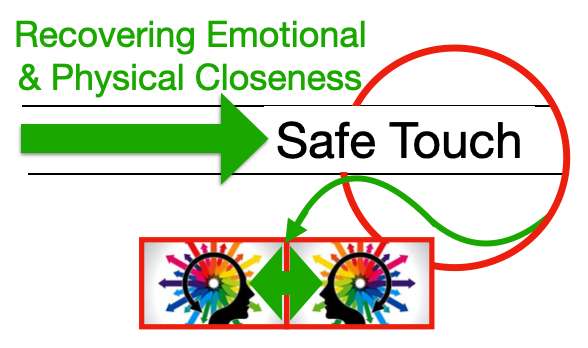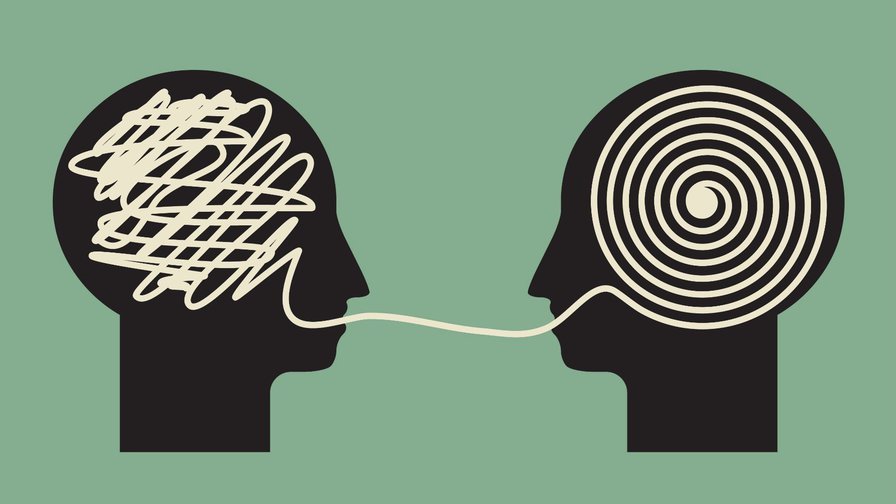Integrating acceptance into your relationship to acknowledge the aspects of your relationship that can’t change can stop resentment loops and spirals, says Relationship researcher Bill Doherty, referencing Andy Christensen's Integrated Behavioral Couples Therapy model.
In this context, acceptance is not complacency but a compassionate understanding of each partner's inherent complexities and limitations, which Gottman Research calls “enduring vulnerabilities.”
Doherty points to the difference between the rigid "Popeye defense: I am what I am” of refusing to evolve with genuine self-awareness, recognizing one's impact on the partner, and a commitment to navigate the differences and limitations compassionately.
Acceptance and complacency in relationship dynamics are distinct, though they may sometimes be confused.
Here’s a breakdown of their differences:
Acceptance:
1. Understanding and Acknowledgment:
Acceptance involves recognizing and understanding the inherent complexities, limitations, and differences within a relationship. It means acknowledging that certain aspects of oneself or one’s partner may not change.
2. Compassionate Exploration:
Acceptance encourages a compassionate exploration of each partner's traits, behaviors, and idiosyncrasies. It fosters an environment where both partners can express themselves without fear of judgment or unrealistic expectations.
3. Commitment to Growth:
While acceptance acknowledges that not everything can be changed, it also entails a commitment to ongoing personal and relational growth. Partners may work to adapt, compromise, or find ways to navigate their differences while still accepting each other
4. Empathy and Connection:
Acceptance promotes empathy and strengthens the emotional bond between partners. It allows individuals to feel seen and understood, which can enhance intimacy and resilience within the relationship.
Complacency:
1. Lack of Motivation for Change:
Complacency often reflects a passive attitude toward relationship issues. It can manifest as a refusal to address problems or make efforts to improve the relationship, leading to stagnation.
2. Rigid Stance:
Complacency may involve a rigid mindset, such as the "Popeye defense" (i.e., "Accept me as I am"). This stance lacks willingness to engage in self-reflection or compromise, potentially ignoring the needs and feelings of the partner.
3. Avoidance of Responsibility:
Complacent individuals may avoid taking responsibility for their actions or their impact on the relationship. This can create frustration and resentment in the partner, as it may feel like one person is not invested in the relationship's health.
4. Detachment:
Complacency can lead to emotional detachment or disconnection, as partners may stop trying to understand or engage with each other’s needs and desires, resulting in a lack of intimacy and fulfillment.
5. Confidence: A belief that everything is fine, even when underlying issues or threats occur.
6. Ignorance of Problems: Failing to recognize or address warning signs or improvement opportunities.
7. False Security: A misguided assurance that current success or stability will only persist with continued effort.
7 Examples of how they differ:
1. Understanding vs. Ignoring
- Acceptance: A partner recognizes that their spouse is naturally introverted and may need time alone to recharge. They appreciate this trait and adjust their expectations for social outings accordingly.
- Complacency: A partner acknowledges their spouse's introversion but dismisses it as an excuse for never wanting to socialize, leading to resentment and a lack of engagement in social activities.
2. Compassionate Dialogue vs. Resentful Silence
- Acceptance: A couple openly discusses how one partner’s tendency to be overly critical stems from their upbringing. They work together to communicate needs without defensiveness, fostering understanding.
- Complacency: One partner accepts the criticism without addressing it, leading to hurt feelings and unresolved tension while feeling unwilling to discuss it further.
3. Flexible Solutions vs. Stagnation
- Acceptance: A partner acknowledges that their spouse has a different communication style (e.g., being more direct). They actively seek ways to bridge the gap, such as agreeing on specific times to discuss complex topics.
- Complacency: A partner feels frustrated by their spouse's directness but does nothing to address it, leading to ongoing miscommunication and frustration without any effort to compromise.
4. Encouragement vs. Giving Up
- Acceptance: A partner recognizes that their spouse tends to procrastinate. They offer support and suggestions for time management, helping them develop strategies to overcome it.
- Complacency: A partner does not address the procrastination and resigns themselves to always completing tasks alone, leading to resentment and a sense of imbalance in the relationship.
5. Mutual Growth vs. Status Quo
- Acceptance: A couple acknowledges differing priorities, such as one partner valuing career advancement and the other prioritizing family time. They find ways to support each other’s goals while maintaining their relationship's well-being.
- Complacency: One partner feels their career is more important and ignores the other’s feelings about family time, leading to resentment and a lack of mutual support or understanding.
6. Respectful Boundaries vs. Conflict Avoidance
- Acceptance: A partner understands that their spouse has a strong need for independence and creates a space where both can pursue individual interests while still valuing their time together.
- Complacency: One partner feels neglected due to the other's independence but avoids discussing it, leading to growing dissatisfaction without addressing the underlying issue.
7. Empathic Listening vs. Emotional Detachment
- Acceptance: A partner realizes the other tends to be more sensitive and takes things personally. They practice empathic listening and validate their spouse's feelings, fostering emotional intimacy.
- Complacency: One partner brushes off the other’s sensitivity, thinking, “They’ll get over it,” which leads to emotional detachment and a lack of understanding in the relationship.
Therefore:
These examples highlight how acceptance involves a proactive, compassionate, and growth-oriented approach to understanding and navigating personality traits and behaviors that cannot be changed, while complacency reflects a passive, unengaged stance that can lead to unresolved issues and emotional distance in the relationship.
Acceptance enriches relationships, fostering deeper connections, while complacency leads to stagnation and dissatisfaction.
Compassionate acceptance is an empowering consideration that inspires more self-awareness and accountability without shame and blame.

































